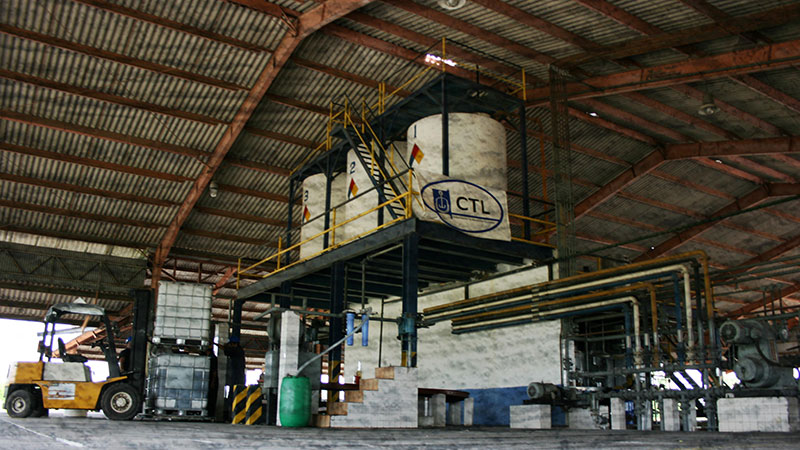Invasive Species in Africa Offer Opportunities for Pesticide Manufacturers
Sub-Saharan Africa is fast emerging as an important market for crop protection companies as the growing problem of invasive alien species become the latest threat to food security and sustainable agriculture.
In recent years the region has witnessed a significant increase in invasive species including pests, plants, fungi and microbes migrating from other ecosystems and which have established new breeding grounds in the continent and are spreading rapidly.
Researchers estimate that 480,000 invasive species have been introduced to different ecosystems globally with their geographical spread and impact growing due to climate change, trade, and tourism. Across the world, about 40% of crop yield losses are due to pest and disease attacks.
In sub-Saharan Africa where a third of the population still face threats of food insecurity, invasive species are on the rise and are costing governments and farmers billions every year in terms of impact and control costs due to declining crop yields in some cases by over 85%, impact on natural pasture that sustain livestock and also on water resources.
“Africa is currently very vulnerable to plant and animal invasions due to increased cross border travels and trade. The situation is aggravated by the weak phytosanitary systems in majority of countries in the continent,” says Dr. Harun Muthuri, a researcher at The International Institute of Tropical Agriculture.
Recent invasions such the fall armyworm, desert locusts, tomato leafminer, Asian fruitfly, cassava mealy bug, Fusarium wilt or Panama disease of bananas, maize lethal necrosis, large grain borers, potato cyst nematodes, soybean rust, and prosopis juliflora among others are adversely impacting and causing massive losses particularly to small-scale farmers.
Invasion of fall armyworm, which origin is the Americas to African, is for instance estimated to cause annual yield loss of 4 million to 17.7 million tons of maize crop alone, with cumulative losses even in other crops estimated at $3 billion annually.
In the case of desert locusts that have been ravaging eastern African countries, conservative estimates show that the pest-related losses including for staple crops, livestock production and asset damages are in range of $8.5 billion.
In South Africa alone, economic losses associated with invasive species are estimated at $14 million annually for recreation and tourism, $1.4 million in water resources and about $52 per hectare in lost pollination services.
Estimates of economic impacts of five major invasive species on production from mixed maize cropping systems of smallholder farmers in six eastern Africa countries namely Ethiopia, Kenya, Malawi, Rwanda, Tanzania and Uganda indicated combined current annual losses of $900 to $1.1 billion with future annual losses projected at $1 billion to $1.2 billion in the next five years.
The growing problem of invasive species has forced farmers to look for quick-fix solutions mainly the use of synthetic chemicals even as governments and agricultural experts try to develop strategies and action plans for long term solutions and look for resources to increase investment in tackling the species.
“Pesticide use is still fairly low in Africa compared to the rest of the world but it is expected to grow exponentially as more pests arrive on the continent. Farmers want a short-term solution to their pest problems – a quick-fix, which is why they tend to use chemicals,” says Dr Arne Witt, Regional Coordinator for Invasive Species for the Center for Agriculture and Bioscience International (CABI).
Currently pesticides use in Africa makes up only 4% of the global pesticide market with a rough estimate of 75,000 to 100,000 tons of pesticide active ingredient used per year in the continent compared to around 350,000 tons in Europe.
In Africa, average pesticide use per hectare of cultivated land is very low at 1.23 kilogram per hectare compared with 7.17 per kilogram and 3.12 per kilogram in Latin America and Asia respectively.
According to Dr. Muthuri, crop protection companies must be on the forefront of tackling the problem of invasive species because majority are difficult to control based on the fact that usually there are no biological agents or chemicals available at the time of invasion.
“Researchers have an opportunity to develop control measure such as biological control or chemicals that are effective against such species,” he states.
Muthuri adds that sub-Saharan Africa is recording a substantial increase in the use of pesticides against invasive species particularly because some of the biological control options are slower in causing mortality.
“In many cases, chemicals are the only available option for management of the invasive species,” he says.
According to a research by CABI, to effectively address the invasive species menace in sub-Saharan Africa, a shift in strategy from a reactive to a more proactive intervention must urgently be adopted based on the internationally recognized three-stage approach of prevention, early detection, and control.
“Governments need to improve their biosecurity systems to prevent the introduction of pests in the first place considering that too many pests are being accidentally introduced,” observes Dr. Witt.
While invasive species have ignited an increase in the use of chemicals, which have increased by as much as 60% in some countries particularly among farmers battling the fall armyworm and by 80 per cent by communities tackling the locusts, chemical manufacturers face the challenge of keeping pace with pests and weeds that develop resistance.
“Excessive use of chemicals often lead to resistance, something that has forced agrochemicals to be proactive in educating farmers on proper use and investing in research and development to be ahead of the pests,” explains Andrew Nguyo, senior agronomist at Amiran Kenya.
For sub-Saharan Africa, experts believe the problem of invasive species is bound to get worse as the impacts of climate change become more severe, a development that puts the livelihoods of millions of people particularly rural populations that depend on agriculture, livestock and fisheries for survival at risk.





